Perhaps the biggest of them all, there's little more personal than planning your wedding - and, for many, when it comes to what you're serving you want to nail it. We get it! What's more, we know you're not the only one. Beginning around Memorial Day each year we get numerous inquiries from couples who care about what wines they will serve at their wedding asking for help. They are often stressed to the max about choosing wines for their big day. In another week the emails with the same burning questions will emerge, this time to ensure company outings and family reunions are well cared for.
While some events have specifications which call for a one-on-one consult (or Pros like us behind the tasting station ;) many others are more streamlined. For the latter case, let's start with the most common criteria hosts present:
1. User-friendly. We want wines that everyone will enjoy, whether they are “usually” an X-wine drinker or not.
2. Food-friendly. We want the wines to work with what we’re serving, whether someone opted for the fish, BBQ chicken or tenderloin.
3. Cost-effect. We don’t want to serve anything “cheap”, but if we could keep things under(?!) or around $15 per bottle, our budget will thank you!
Good news - you can address all of these concerns in just 4 deliberate steps!
Streamline your offerings. There are reasons (yes, plural) themed, or “His and Her Cocktails” are so popular… It’s festive, for sure, and fewer options for guests tightens up your liquor order (read: budget), focuses consumption, AND expedites service! So approach wine offerings similarly and CHOOSE YOUR OWN “HOUSE” WINES: offering a sparkler plus a crowd-pleasing white and red (with maybe a beautiful dry rosé thrown in for good measure) will satisfy the majority (if not all!) of your guests. Remember, these distinct options offer enough variety themselves. So have fun with it! You could even come up with creative, personal or company-culture-derived names for each choice.
Pick a Perky White. Wines with higher acidity are food-friendly by nature; and their mouthwatering effect also comes in handy when your boss' boss is bending your ear about that big project you're working on, or your best friend just got stuck talking to crazy Aunt Edna. Sauvignon Blanc works, sure(!), but one of our other party tricks is to select grape varietals guests may not have ever heard of, let alone tasted. Case in point: as popular as Austrian Gruner Veltliner and Spanish Albarino are becoming, these are not grapes that everyone knows (though they should!). Offering something people have no expectations about means they just simply sip and enjoy.
Select a Smooth Red. When it comes to selecting your red offering, you want something that strikes a middle ground – something not too bold and dry, and something not too light. You also want something that goes down smooooth – something with nice fruit and soft edges. Here again, a way to work around the grape varietal fatigue (aka I only drink Cab, Syrah, Merlot…) is to choose wines that are named for their region, with no varietal labeling evident. Smart picks are red wines from the Cotes du Rhone or Languedoc (fabulous, food-friendly, people-happy, French red blends) or wallet-friendly Spanish Rioja (the more expensive options often mean the wine has spent more time in oak barrels, which puts the wine into the “too bold” camp). These regions have prolific, 100% delicious options that are exceptional values!
Save on Bubbles. Some say you should splurge in this category; we don’t necessarily agree. While you certainly can go all out, remember that the nuances a higher-priced bubbly offer could be lost in the equation. More often sparkling wine is consumed to add an additional festive flare. And there are many great (dry, aka Brut) options from beyond Champagne, France that lend exactly the helping hand you desire, with plenty of Delight on offer at oh-so reasonable prices. For some suggestions beyond the usual suspects Cava and Prosecco, check out alternatives here and see below.
Have faith! Less is more, especially when you trot off the beaten path. With this approach you’ll be setting yourself up for success!
Dying for some specific recs in each of these categories?? No problem! For the next several weeks you can find some widely available wines that check the above boxes via the Pour Favor Wine Events list available on the DRYNC wine app.Need more ideas? Get in touch directly!



 At
At 
 Jaume used his pepito (plastic theif) to “steal” a bit of wine from each of the 2010 barrels enjoying their siesta (pre-aging/bottling) in barrels below the alfresco tasting porch so I could taste them each au natural. What an experience! This is the sort of opportunity that drives home the essence of varietal expression. Grenache is uniquely Grenache, with natural variation depending on the vineyard site; but at the end of the day, a Granny Smith apple is too tart to be called Macintosh just like Grenache is too red-berry fruited to be called Mouvedre, a more smoked meat, gamey, blueberry/redberry fruit flavored varietal. How varietals work together is what makes a particular Clos stand out in their efforts (aka when to pick, in what vessel one should ferment each varietal, and later, what balance of grapes will comprise the final wine).
Jaume used his pepito (plastic theif) to “steal” a bit of wine from each of the 2010 barrels enjoying their siesta (pre-aging/bottling) in barrels below the alfresco tasting porch so I could taste them each au natural. What an experience! This is the sort of opportunity that drives home the essence of varietal expression. Grenache is uniquely Grenache, with natural variation depending on the vineyard site; but at the end of the day, a Granny Smith apple is too tart to be called Macintosh just like Grenache is too red-berry fruited to be called Mouvedre, a more smoked meat, gamey, blueberry/redberry fruit flavored varietal. How varietals work together is what makes a particular Clos stand out in their efforts (aka when to pick, in what vessel one should ferment each varietal, and later, what balance of grapes will comprise the final wine).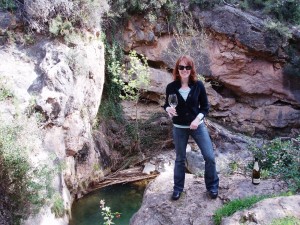
 The New England Patriots got the nod this year to play opening week's Monday Night football - as it happened, not just on a gorgeous night in Mass., but with the re-introduction of Tom Brady to the line-up. (Yeah, we've lost a few of our key defenders; but we still have Belichik. And we still have one of the top QBs in the league, even if he is a little banged up and not my personal favorite beyond the playing field.)
What's a girl to do on such a momentous night? Make pizza. From scratch. And enjoy exceptional wine(s) - during the preparation process and throughout the meal! What better excuse do you need to open two of the most highly sought and difficult to find wines in our market:
The New England Patriots got the nod this year to play opening week's Monday Night football - as it happened, not just on a gorgeous night in Mass., but with the re-introduction of Tom Brady to the line-up. (Yeah, we've lost a few of our key defenders; but we still have Belichik. And we still have one of the top QBs in the league, even if he is a little banged up and not my personal favorite beyond the playing field.)
What's a girl to do on such a momentous night? Make pizza. From scratch. And enjoy exceptional wine(s) - during the preparation process and throughout the meal! What better excuse do you need to open two of the most highly sought and difficult to find wines in our market: 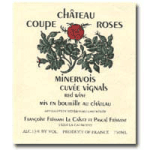 I was channeling Disney and Belle a couple of weeks ago. Today I envision a Greek god named Minervois. Except the name "Minervois", a small sub-region of the Languedoc in France, actually comes from the village of Minerve. Who knew? Because when I re-tasted an old favorite from this area, I wasn't just pleased with the result, it was a near-spiritual experience - for just $13 (retail).
Backing up a touch, Minervois offers the world reasonably priced reds typically comprised of Grenache, Syrah and Mouvedre, perhaps with some Carignan or Cinsault mixed in for good measure. It depends. It's an experimental part of the world down there. Some wines are purely easy quaffing selections. But others are quite memorable. Typically the latter come from low-yield vines (remember, this means concentrated fruit flavors) in the rocky hills above the plateau.
I was channeling Disney and Belle a couple of weeks ago. Today I envision a Greek god named Minervois. Except the name "Minervois", a small sub-region of the Languedoc in France, actually comes from the village of Minerve. Who knew? Because when I re-tasted an old favorite from this area, I wasn't just pleased with the result, it was a near-spiritual experience - for just $13 (retail).
Backing up a touch, Minervois offers the world reasonably priced reds typically comprised of Grenache, Syrah and Mouvedre, perhaps with some Carignan or Cinsault mixed in for good measure. It depends. It's an experimental part of the world down there. Some wines are purely easy quaffing selections. But others are quite memorable. Typically the latter come from low-yield vines (remember, this means concentrated fruit flavors) in the rocky hills above the plateau.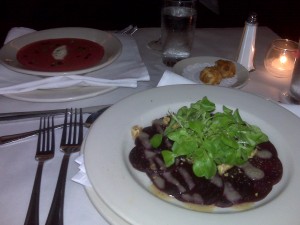 Imagine my delight when I popped over to
Imagine my delight when I popped over to 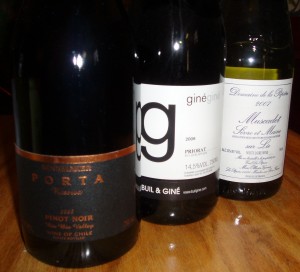 I can hardly believe it's already the second Monday in May - and time to unleash this month's
I can hardly believe it's already the second Monday in May - and time to unleash this month's 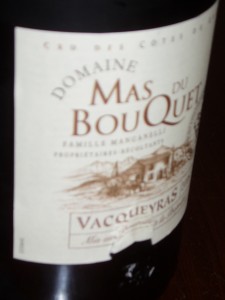 We've had a lovely bender of 80 degree temps here in Beantown. Love it. My soul is being nourished with Vitamin D, my grill is getting some much needed TLC, and I have an "excuse" to drink red wines even when it is warm out.
This week I brought home a bottle of one of my all time favorite wines:
We've had a lovely bender of 80 degree temps here in Beantown. Love it. My soul is being nourished with Vitamin D, my grill is getting some much needed TLC, and I have an "excuse" to drink red wines even when it is warm out.
This week I brought home a bottle of one of my all time favorite wines: 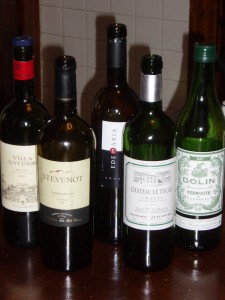 I hope you and yours had a wonderful time popping a cork or two last Saturday night for
I hope you and yours had a wonderful time popping a cork or two last Saturday night for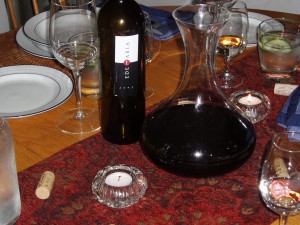 %) and Cabernet Sauvignon (25%). My inspiration for the paprika braised chicken was distinct from the wine I knew I would have on offer, so decanting was a priority to soften any rough edges and remove the sediment the wine was likely to throw. Since I know my friend prefers fruit-forward wines to uber-dry ones, I hoped this wine would deliver a nice silky mouthfeel, with both red and black fruits apparent. Finally, given the region's proximity to the Priorat, I hoped it would have a gentle herbaceousness and a touch of earthy leather. I was pleased to discover it delivered on all of the above!
%) and Cabernet Sauvignon (25%). My inspiration for the paprika braised chicken was distinct from the wine I knew I would have on offer, so decanting was a priority to soften any rough edges and remove the sediment the wine was likely to throw. Since I know my friend prefers fruit-forward wines to uber-dry ones, I hoped this wine would deliver a nice silky mouthfeel, with both red and black fruits apparent. Finally, given the region's proximity to the Priorat, I hoped it would have a gentle herbaceousness and a touch of earthy leather. I was pleased to discover it delivered on all of the above! While I may talk a lot about my love of rustic, French wines, Spain is also near and dear to my heart. In particular, I frolic in the
While I may talk a lot about my love of rustic, French wines, Spain is also near and dear to my heart. In particular, I frolic in the